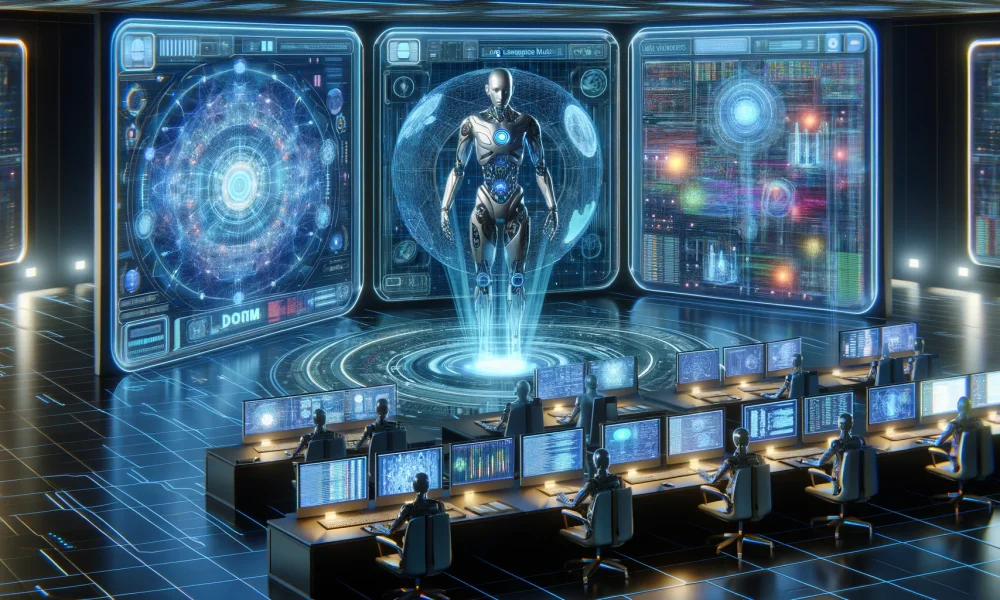Revolutionizing Brain Activity Decoding with DPAD Algorithm
The intricate workings of the human brain are now within reach, thanks to the groundbreaking DPAD algorithm developed by researchers at USC. This artificial intelligence breakthrough promises a new era in decoding brain activity for brain-computer interfaces (BCIs).
Unraveling the Complexity of Brain Signals
Understanding the complexity of brain activity is key to appreciating the significance of the DPAD algorithm. With multiple processes running simultaneously in our brains, isolating specific neural patterns has been a monumental challenge. However, the DPAD algorithm offers a fresh perspective on separating and analyzing behavior-related patterns in the midst of diverse neural activity.
Reimagining Neural Decoding with DPAD
Led by Maryam Shanechi, the team at USC has unlocked a new approach to neural decoding with the DPAD algorithm. This innovative technology utilizes a unique training strategy that prioritizes behavior-related brain patterns, revolutionizing the way we interpret brain signals.
Enhancing Brain-Computer Interfaces with DPAD
The implications of DPAD for brain-computer interfaces are significant. By accurately decoding movement intentions from brain activity, this technology opens doors to more intuitive control over prosthetic limbs and communication devices for paralyzed individuals. The improved accuracy in decoding promises finer motor control and enhanced responsiveness in real-world settings.
Looking Beyond Movement: Mental Health Applications
The potential of DPAD extends beyond motor control to mental health applications. Shanechi and her team are exploring the possibility of using this technology to decode mental states such as pain or mood. This breakthrough could revolutionize mental health treatment by providing valuable insights into patient symptom states and treatment effectiveness.
The Impact of DPAD on Neuroscience and AI
DPAD’s development not only advances neural decoding but also opens new avenues for understanding the brain itself. By providing a nuanced way of analyzing neural activity, DPAD could contribute to neuroscience breakthroughs and showcase the power of AI in tackling complex biological problems. This algorithm demonstrates the potential of machine learning to uncover new insights and approaches in scientific research.
-
How does the DPAD algorithm enhance brain-computer interfaces (BCIs)?
The DPAD algorithm improves the accuracy and efficiency of BCIs by better detecting and interpreting brain signals, leading to more seamless and precise control of devices or applications. -
What are some promising advancements in neurotechnology that the DPAD algorithm could help facilitate?
The DPAD algorithm could help facilitate advancements such as more intuitive and responsive prosthetic limbs, improved communication devices for individuals with speech disabilities, and enhanced virtual reality experiences controlled by brain signals. -
Is the DPAD algorithm compatible with existing BCIs or does it require specialized hardware?
The DPAD algorithm is designed to be compatible with existing BCIs, making it easier for researchers and developers to integrate this technology into their current systems without the need for additional specialized hardware. -
How does the DPAD algorithm compare to other signal processing methods used in BCIs?
The DPAD algorithm has shown superior performance in terms of accuracy and speed compared to other signal processing methods used in BCIs, making it a promising tool for enhancing the capabilities of neurotechnology. - What are some potential real-world applications for BCIs enhanced by the DPAD algorithm?
Real-world applications for BCIs enhanced by the DPAD algorithm could include improved control of robotic exoskeletons for individuals with mobility impairments, more efficient rehabilitation tools for stroke patients, and advanced neurofeedback systems for enhancing cognitive skills.


